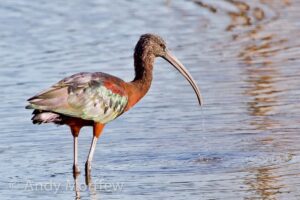One of the most important global meetings on wildlife trade has just wrapped up in Uzbekistan. It’s capital city Samarkand was where governments convened for the 20th Conference of the Parties (CoP20) to the Convention on International Trade in Endangered Species of Wild Fauna and Flora (CITES) to decide how international trade should be managed for some of the world’s most threatened...
A place of refuge and respite


The Great Cumbung Swamp is a fertile wetland of national importance.
Photo credits: Left: Dr John Porter, Right: Andy Morffew via flickr
When viewed from above the lush marshes and contrasting river gums of the Great Cumbung Swamp may be unsuspecting. But their slender reeds, fertile wetlands and lakes support much diversity forming rest and refuge spots for migratory birds as well as resident avifauna, amphibians and fish. But the future of this wetland is not evergreen, with the ecosystem threatened by anthropogenic impacts.
The community
The Great Cumbung Swamp (GCS) is a wetland of national importance located in the Southwest Region of New South Wales at the intersection of the Murrumbidgee and Lachlan Rivers. The GCS encompasses subtropical temperate forested wetlands, floodplain marshes, seasonal and ephemeral freshwater lakes as well as episodic arid floodplains.
The GCS encompasses subtropical-temperate forested wetlands, floodplain marshes, seasonal and ephemeral freshwater lakes as well as episodic arid floodplains. When flooded, the seasonal floodplain marsh covers between 15,000 and 20,000 hectares.
The wetland supports one of the largest areas of Near Threatened river red gum (50,000 hectares) in the Riverina bioregion and the Murray-Darling Basin and extensive beds of common reeds. Reed beds provide essential areas for breeding required by threatened species such as the Endangered Australasian bittern and southern bell frog. The reeds also provide ecosystem functions such as carbon sequestration, and trap and process sediment and nutrients to maintain water quality.
The ecosystem hosts a variety of wildlife including reptiles, birds, amphibians and fish. Thirty-four recognised threatened species including eight species listed in the IUCN Red List of Threatened Species visit or inhabit the GCS. It is also an important site for waterbirds in the region with an average of 11,500 occurring on the wetland each year. Migratory bird species that visit the GCS are the common gull-billed tern, marsh sandpiper and glossy ibis. Other Vulnerable bird species include the blue-billed duck, common greenshank, spotted harrier, white-bellied sea-eagle and grey-crowned babbler. A Vulnerable native flora species also occurs in the ecosystem-the Mossgiel daisy.
Threats the Great Cumbung Swamp faces include changes by anthropogenic impacts such as altered flooding and flow regimes through upstream diversions, climate change, timber harvesting and invasive species such as European carp and feral pigs which affect water quality and ecosystem balance.
Conservation actions
Earlier this year HSI Australia made a nomination for the Great Cumbung Swamp to be listed as Critically Endangered due to its importance as a waterbird breeding site, refuge for migratory birds and national conservation significance. Currently it is listed in the Directory of Important Wetlands of Australia but it is not a protected area and is not listed in the Environment Protection and Biodiversity Conservation Act 1999 (EPBC Act). With HSI’s help hopefully this can change and the GSC can receive the protection it deserves to live on and support the flora and fauna that rely on it.


